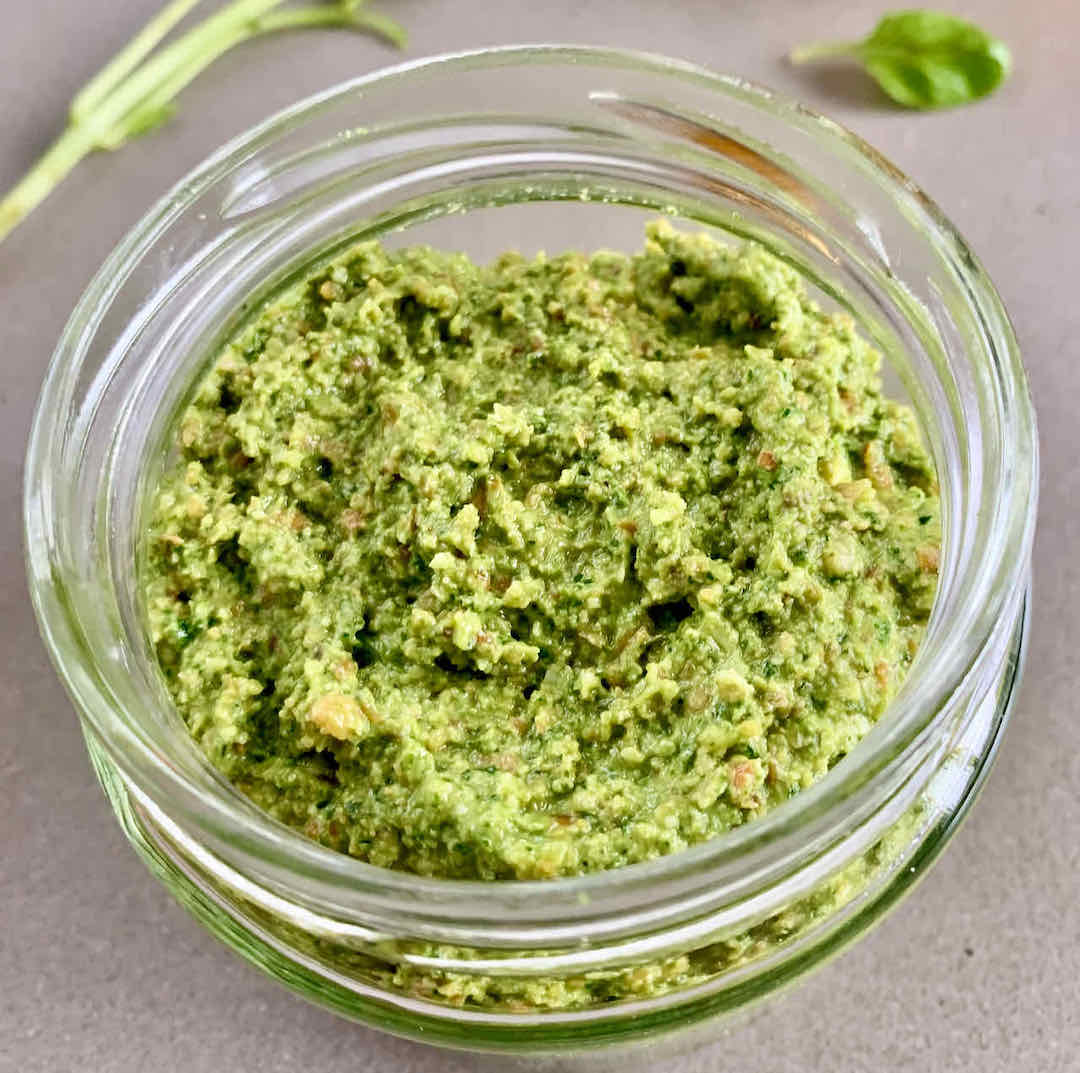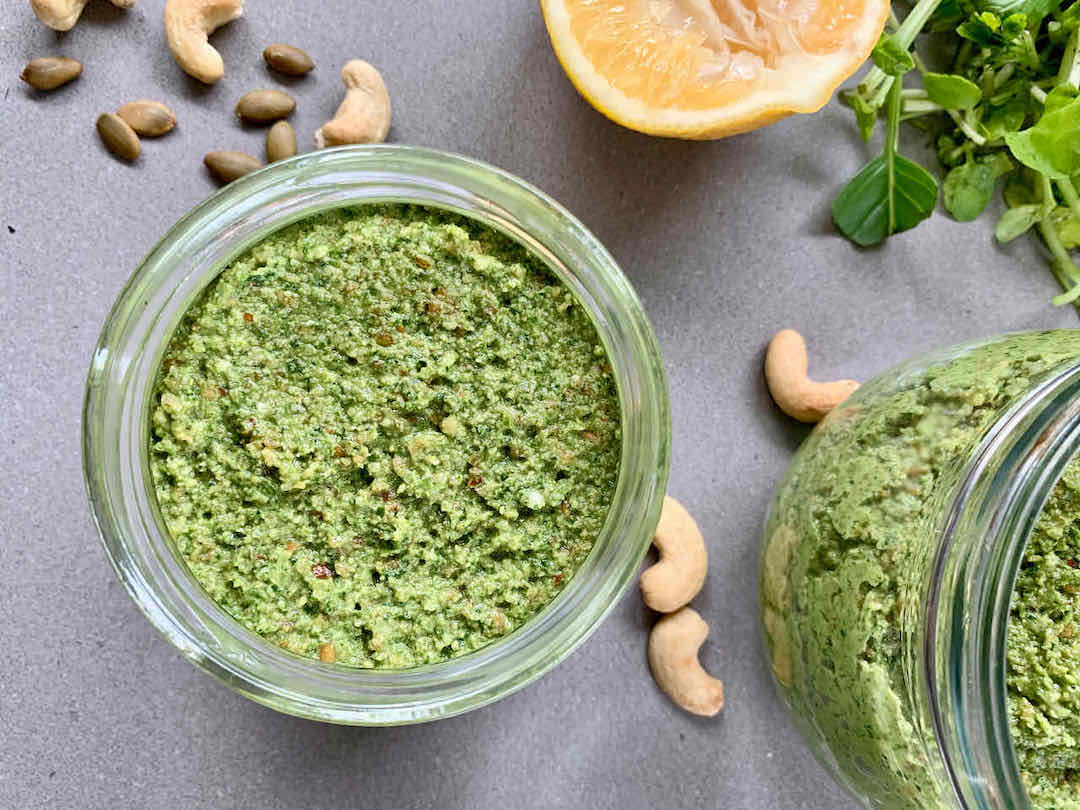For many of us getting more greens into our diet feels like an ongoing challenge but it doesn’t have to be with this this fresh and nutritious watercress pesto pasta. Herbs and leafy greens really pack a punch when it comes to the amount of essential nutrients and phytonutrients they deliver in a single serve. This watercress pesto pasta is no different with a base of watercress and basil combined with pepitas and cashews for a slightly peppery, very flavoursome and creamy pesto. The pesto is super easy to use and can be added to your favourite pasta or added to salads, seafood, slow cooked meats, sandwiches or used as a dip for vegetable sticks.
Dietary Suitability









Food As Medicine
✓ Watercress
Watercress has been identified as the most nutrient dense vegetable for meeting the daily intake of 17 key nutrients per 100 calories. These nutrients included fibre, protein, iron and vitamins B, C and K . This study that looked at defining powerhouse fruits and vegetables found watercress to top the list followed by Chinese cabbage, chard, beet greens, spinach, chicory, leaf lettuce, parsley, romaine lettuce, collard green, turnip green, mustard green, endive, chive and kale (1). Watercress with its slightly peppery flavour is in season in winter so can be enjoyed as a pesto for pasta, a greens base for roasted vegetable salads or as a topping for soups, seafood or slow cooked meats. Although just like with other nutrient dense leafy greens, some of the essential nutrients can be lost during the cooking process, so it is best to eat your watercress raw.
✓ Pumpkin Seeds
As a variety loving nutritionist you probably shouldn’t have a favourite seed, just like as a mother you shouldn’t have favourite children. But if I had to choose a favourite seed I think pumpkin seeds, also known as pepitas, would have to be it. Pepitas are a great source of protein and healthy unsaturated fats including omega-3 and omega-6 fatty acids. This means they can help you feel satisfied for longer. A 1/4 cup serving of pumpkin seeds provides 184mg of magnesium, providing over half our recommended daily intake of magnesium. Magnesium is needed for heart and nerve health making it an important one for those of us stress heads looking to support our nervous system and stress response and get a good night’s sleep. For such little seeds, pumpkin seeds also provide a great source of vitamin E, magnesium, zinc, iron, copper, manganese, phosphorus, iron and calcium. They are most nutritious enjoyed raw but I really love their taste when lightly toasted in the oven too.
✓ Cashews
Cashews are great for blending as they create a smooth and creamy texture. No other nut ever seems as creamy as cashews when blitzed in the food processor. This texture makes cashews a great alternative to dairy for those of you on a dairy free diet as they can be used as a base for cashew milks, cheeses, cream sauces, deserts and pestos like this recipe. But aside from the great texture, cashews are a powerhouse nut providing decent amounts of magnesium, copper, zinc, iron, vitamin K and B vitamins in a serve of about 18 cashew nuts. Cashews are also a decent source of resistant starch, providing about 3.5g of resistant starch per serve. Resistant starch is important for feeding our resident gut bacteria so they can support digestive health and help protect from disease and illness. Cashews also contain the healthy fats, monounsaturated and polyunsaturated fatty acids that have been linked with heart health. When consumed in moderation or at 1.5 serves a day they have been shown to improve the removal of low-density lipoprotien (LDL) cholesterol from the bloodstream. This is a good thing as LDL can collect in the walls of your blood vessels and then increase your chance of heart concerns such as having a heart attack or stroke (2).

[tasty-recipe id=”2103″]

